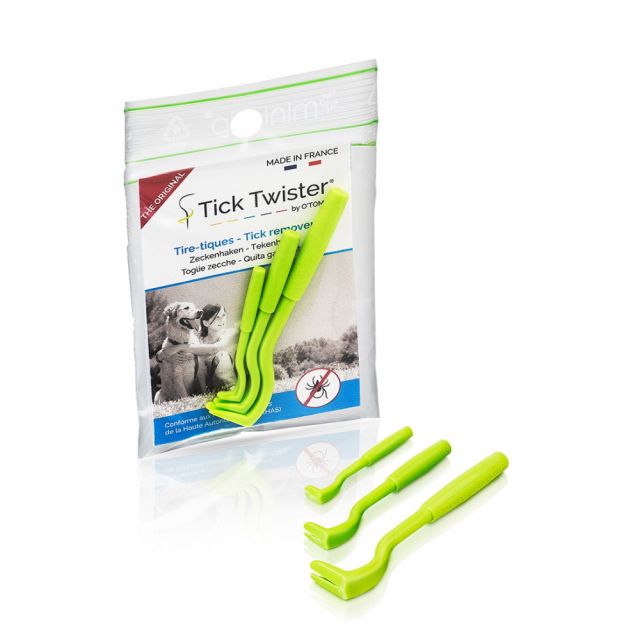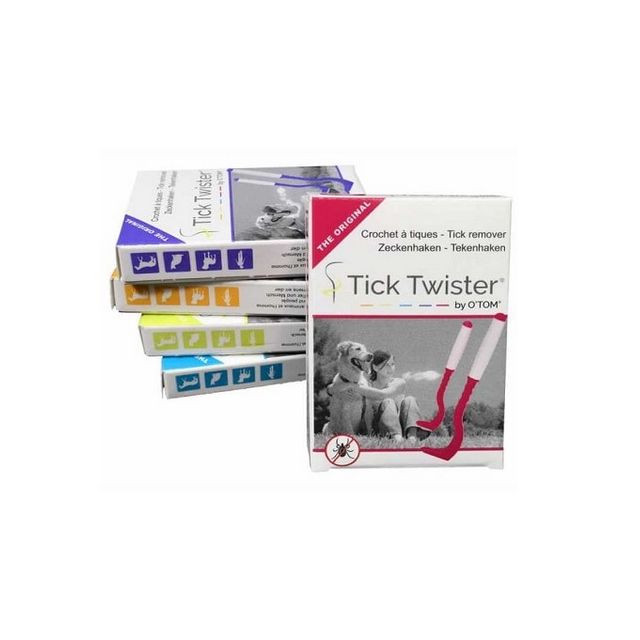Ticks in cats
Ticks are external parasites that many outdoor cats will encounter at some point in their lives. These annoying little creatures are widespread in our environment, especially in low vegetation such as tall grass, shrubbery, and dune areas. Ticks are most active from March to October and can transmit diseases such as Lyme disease or Babesiosis. It is crucial to regularly check your cat for the presence of ticks if she goes outside. The most common symptoms of a tick bite are irritation, itching, and inflammation at the site of the bite. Pharmacy4pets helps prevent ticks in your cat.
Removing Ticks from Your Cat
A tick bite can occur anywhere on your pet's body, but ticks prefer warm and moist areas. Examples of these include the armpits and groin. Therefore, be sure to check these areas carefully after your cat has been outside. You can recognize a tick as a cream-colored to black 'bump', round to oval/flat, that attaches itself to the skin. Unfortunately, ticks are sometimes mistaken for nipples. The latter are usually pink, and the color fades when they are grasped with tweezers. It goes without saying that attempting to remove a nipple is extremely painful for your cat!
The longer a tick is present, the greater the risk of disease transmission. Regularly checking your cat is essential. If the tick is removed within 24 hours of attachment, the risk of disease transmission is minimal. When removing the tick, it is important not to disinfect the tick bite beforehand or apply oil. To remove the tick in one go, grasp it as close to the skin as possible with tick tweezers and gently pull it straight up from the skin (when using a tick tweezer) or slide the tick hook under the tick and then twist it out. Then, check to ensure all parts of the tick have been removed and disinfect the wound if necessary with Betadine solution. In the days following the bite, it is important to regularly check the skin to see if inflammation develops. For mild redness and swelling, you can apply honey ointment. If this is insufficient or if the skin is significantly inflamed, consult your veterinarian. "Erythema migrans," the red, ring-shaped rash around the site of a tick bite, which is alarming in humans, is NOT seen in cats.
Preventing Ticks in Your Cat
Ticks are not always easy to find, and most cats do not appreciate being fussed with their bodies, making tick removal not automatic. Because ticks can cause irritation and transmit diseases, tick prevention is crucial. Pharmacy4pets offers various anti-tick products that allow your cat to safely enjoy the outdoors.
Tick Collar
If your cat spends a lot of time outdoors, a tick collar is a solution. The Seresto collar provides your cat with up to 8 months of protection against ticks. The collar can be used on kittens from 10 weeks of age. When applying around the neck, it is essential to leave 2 fingers of space between the neck and the collar, but the collar must make contact with the skin to be effective and therefore should not be too loose. Tick collars with ceramic beads do NOT work.
Tick Spot-On
A spot-on or pipette is usually easy to administer by squeezing the contents of the pipette onto the skin between the shoulder blades. Most spot-ons against ticks also work against fleas. However, resistance to the active ingredient fipronil in many flea and tick pipettes is observed with fleas. Examples of pipettes that protect against ticks for four weeks are Frontline Spot-On and Effipro Duo Spot-On.
Tablet against Ticks
Tablets such as AdTab effectively kill ticks on your cat for four weeks. However, for the tick to die, it must first bite. Tablets, therefore, do not have a repellent effect against ticks: your cat can still get ticks; they just drop off quickly.
Spray against Ticks
Finally, the anti-tick spray is a method to protect your cat against ticks for a period of up to 4 weeks. The Frontline spray should be sprayed from a distance of 10 to 20 cm over the entire coat or distributed over the coat with a glove. After spraying the liquid, massage your cat's coat so that the liquid can penetrate the skin well. The Frontline spray can be used on very young kittens. However, for young kittens, use the 100ml variant.
Natural Remedies against Ticks
Certain natural remedies, such as essential oils (e.g., citrus oil, peppermint oil, eucalyptus oil) and garlic, are believed to have anti-tick effects. Necklaces with ceramic beads are also promoted as anti-tick products. However, the effectiveness and safety of these products have not been demonstrated through scientific research, so these products cannot be registered as anti-parasitic products. Some active ingredients in these natural products have even been shown to be toxic to cats. The use of these remedies is therefore not recommended. If you have any questions about ticks in your cat or about Pharmacy4Pets products, please contact us.
| Tick Treatments | Administration | Duration of Effect |
| Tick Collar | Apply the collar, and the active ingredient spreads through the cat's skin. | up to 8 months |
| Tick Spot-On | Apply the liquid with the pipette to the skin between the shoulder blades. From here, the liquid will spread. | up to 4 weeks |
| Tablet against Ticks | The tablet kills ticks when they bite your cat. Tablets do not have a repellent effect. | up to 1 month |
| Tick Spray | Spray the liquid from a distance of 10 to 20 centimeters onto the coat and then massage it in well. | up to 4 weeks |
| Natural Remedies | Effectiveness and safety not proven. | Effectiveness not proven |


